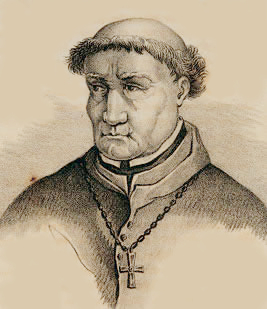Spanish Inquisition






Spanish Inquisition
The Spanish Inquisition was a significant and formidable institution within the history of Spain, established in 1478 by Catholic Monarchs Ferdinand II of Aragon and Isabella I of Castile. It was intended to maintain Catholic orthodoxy within their kingdoms and was characterized by its methods of interrogation and punishment of those accused of heresy. The Spanish Inquisition is often cited as one of the most brutal periods in European history, with its use of torture and public executions.
Background[edit]
The inception of the Spanish Inquisition can be traced back to the desire of the Catholic Monarchs to ensure the religious unity of their kingdoms. This was partly in response to the Reconquista, the centuries-long series of campaigns by Christian states to recapture territory taken by Muslims. By the late 15th century, Spain was predominantly Catholic, but there were significant populations of Jews and Muslims, as well as converts from these faiths to Christianity, known as Conversos and Moriscos, respectively.
Establishment[edit]
The Spanish Inquisition was formally established with the papal bull Exigit Sinceras Devotionis Affectus, issued by Pope Sixtus IV in 1478. The Inquisition was under the direct control of the Spanish monarchy, unlike earlier inquisitions, which were under papal control. It was initially aimed at identifying heretics among the Conversos, who were suspected of secretly practicing Judaism.
Operations[edit]
The operations of the Spanish Inquisition were carried out by inquisitors, who were appointed by the monarchy. The Inquisition had its own courts and prisons. Accused individuals were often arrested in secret and subjected to interrogation and torture to elicit confessions. Punishments ranged from fines and penance to imprisonment and execution, often by burning at the stake.
Impact[edit]
The Spanish Inquisition had a profound impact on Spanish society and beyond. It led to the expulsion of Jews from Spain in 1492 and later contributed to the expulsion of the Moriscos in the early 17th century. It also enforced strict censorship, controlling the publication and importation of books. The Inquisition was not officially abolished until 1834, marking nearly 350 years of operation.
Criticism and Legacy[edit]
The Spanish Inquisition has been the subject of extensive criticism and debate among historians and scholars. It is often portrayed as a symbol of religious intolerance and the abuse of power. The Inquisition's methods and the number of victims have been exaggerated in some historical accounts, leading to a complex legacy that continues to be reassessed by modern scholarship.
See Also[edit]
Ad. Transform your life with W8MD's Budget GLP-1 injections from $75


W8MD offers a medical weight loss program to lose weight in Philadelphia. Our physician-supervised medical weight loss provides:
- Weight loss injections in NYC (generic and brand names):
- Zepbound / Mounjaro, Wegovy / Ozempic, Saxenda
- Most insurances accepted or discounted self-pay rates. We will obtain insurance prior authorizations if needed.
- Generic GLP1 weight loss injections from $75 for the starting dose.
- Also offer prescription weight loss medications including Phentermine, Qsymia, Diethylpropion, Contrave etc.
NYC weight loss doctor appointmentsNYC weight loss doctor appointments
Start your NYC weight loss journey today at our NYC medical weight loss and Philadelphia medical weight loss clinics.
- Call 718-946-5500 to lose weight in NYC or for medical weight loss in Philadelphia 215-676-2334.
- Tags:NYC medical weight loss, Philadelphia lose weight Zepbound NYC, Budget GLP1 weight loss injections, Wegovy Philadelphia, Wegovy NYC, Philadelphia medical weight loss, Brookly weight loss and Wegovy NYC
|
WikiMD's Wellness Encyclopedia |
| Let Food Be Thy Medicine Medicine Thy Food - Hippocrates |
Medical Disclaimer: WikiMD is not a substitute for professional medical advice. The information on WikiMD is provided as an information resource only, may be incorrect, outdated or misleading, and is not to be used or relied on for any diagnostic or treatment purposes. Please consult your health care provider before making any healthcare decisions or for guidance about a specific medical condition. WikiMD expressly disclaims responsibility, and shall have no liability, for any damages, loss, injury, or liability whatsoever suffered as a result of your reliance on the information contained in this site. By visiting this site you agree to the foregoing terms and conditions, which may from time to time be changed or supplemented by WikiMD. If you do not agree to the foregoing terms and conditions, you should not enter or use this site. See full disclaimer.
Credits:Most images are courtesy of Wikimedia commons, and templates, categories Wikipedia, licensed under CC BY SA or similar.
Translate this page: - East Asian
中文,
日本,
한국어,
South Asian
हिन्दी,
தமிழ்,
తెలుగు,
Urdu,
ಕನ್ನಡ,
Southeast Asian
Indonesian,
Vietnamese,
Thai,
မြန်မာဘာသာ,
বাংলা
European
español,
Deutsch,
français,
Greek,
português do Brasil,
polski,
română,
русский,
Nederlands,
norsk,
svenska,
suomi,
Italian
Middle Eastern & African
عربى,
Turkish,
Persian,
Hebrew,
Afrikaans,
isiZulu,
Kiswahili,
Other
Bulgarian,
Hungarian,
Czech,
Swedish,
മലയാളം,
मराठी,
ਪੰਜਾਬੀ,
ગુજરાતી,
Portuguese,
Ukrainian
